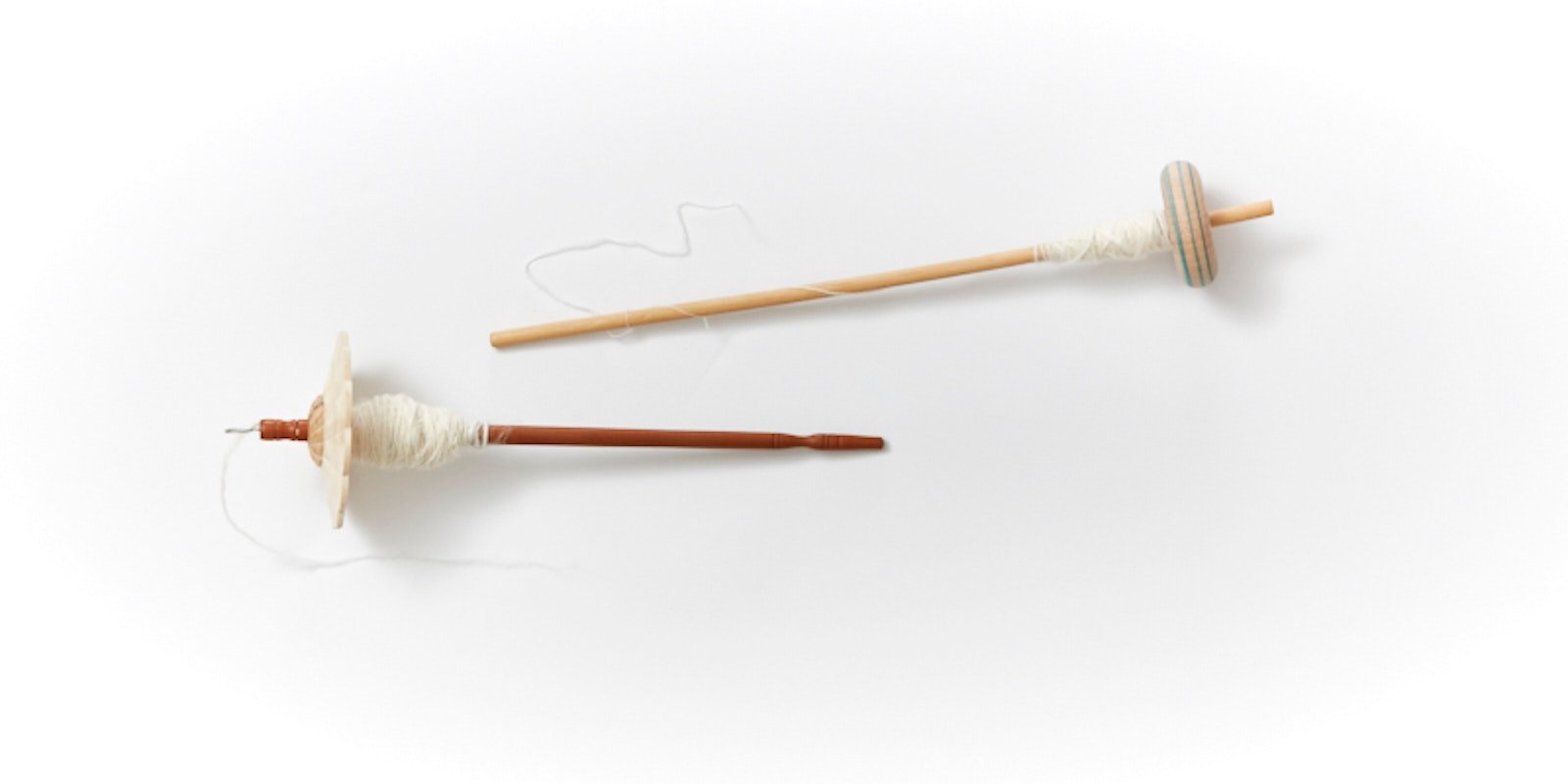During three weeks of spinning on the wheel, I have spun in both directions, switched whorls, adjusted the tension and drive band, and even screwed one of the feet back on. But since the spinning world is vast, the time has come for me to move on from the wheel and learn something new, the drop spindle.
In comparison to the spinning wheel, the drop spindle seemed simple yet mystifying. How could a task that required all the different moving parts of the wheel be accomplished by an instrument as simple as the spindle?
The Low-Whorl Spindle
Spin Off Editor Anne Merrow offered me a sizeable collection of spindles to try. I chose two: a low-whorl and a high-whorl. After I attached fiber to the leader of the low-whorl, Spin Off Assistant Editor Elizabeth Prose showed me how to do the half hitch. Using the park-and-draft method of resting the spindle between my knees while drafting, I slowly began to spin yarn. Having to undo and redo the half hitch each time I wound the yarn onto the bobbin seemed disruptive to the momentum; when I did more research later on drop spinning, I found a super helpful post from Anne on making a half hitch. The steps are easy to follow, and it helped me smooth out the process.
I learned to tie a half hitch on this low-whorl spindle.
The High-Whorl Spindle
What I like most about the high-whorl spindle is that there is no need to tie a half hitch at each wind on. With just a little flick, my spindle spun for a long time, so I actually tried drafting while it spun instead of using the park and draft technique. I experienced a few too many instances of the spindle going in the opposite direction without my noticing and the whole thing falling to the ground, though, so I reverted back to parking and drafting. Not only was this method good practice, but I also realized that focusing on drafting resulted in a more balanced yarn.
The high-whorl was my favorite of the two spindles I tried.
Weighing the Options
In conversations with other spinners, I’ve found that many prefer the wheel to the spindle, and I can certainly understand why—the spindle can seem laborious and slow compared to the wheel. I, however, appreciate the simplicity of the spindle. I enjoy the portability and the idea that one simple (and affordable) tool can do the same thing as a complex contraption—even if it requires a bit more patience. I’m not sure exactly why, but working on a spindle made me feel much closer and more attentive to the task at hand.
From day one of my spinning journey, it has been abundantly clear that spinning involves a lot of choices: Wheel or spindle? Change your body or change the wheel? Low-whorl or high-whorl spindle? The decision-making aspect of the craft is explored in depth in the Spring 2017 issue of Spin Off, which I’ve found to be very helpful while making my own spinning decisions. Connie Kephart’s article “The Right Spindle for the Job” on page 48 was especially helpful for this lesson as it explores many different types of spindles.
Next week’s adventure will take me a step further into the spinning world as I try an electric spinner. Stay tuned!
—Jenna
View all of my spinning lessons!
Tales of a Beginning Spinner: Lesson One Tales of a Beginning Spinner: Change Your Whorl, Change Your Yarn Tales of a Beginning Spinner: Learning to Ply
Master spinning with a drop spindle in these classic resources!



